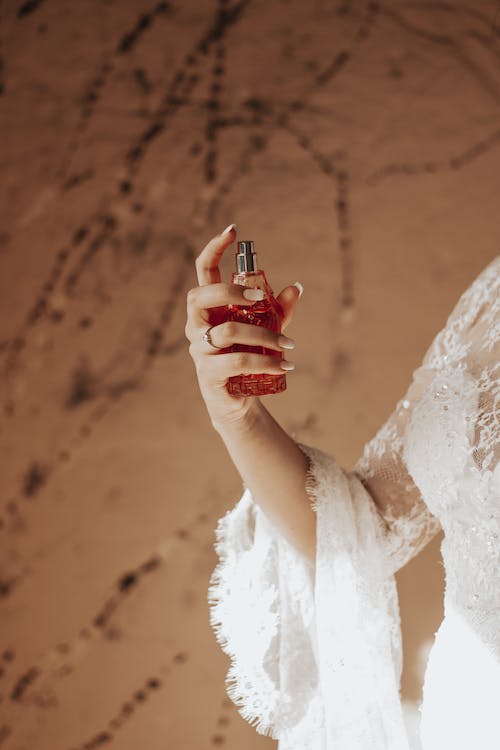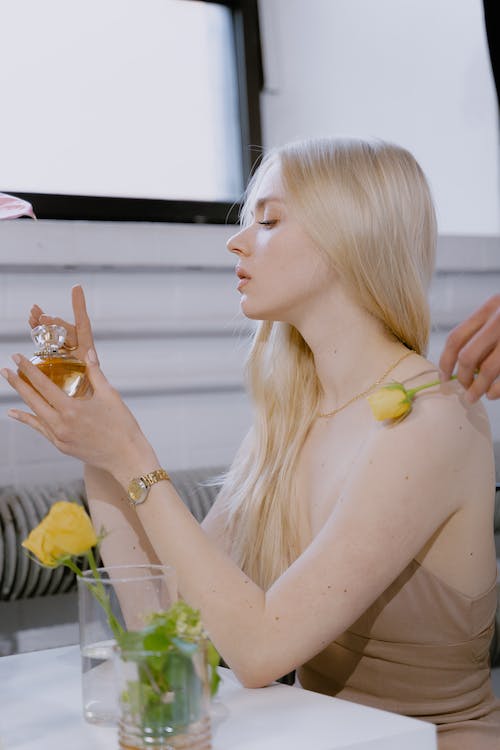Perfume Making – Perfume is a fascinating creation that has captivated our senses for centuries. It has the power to evoke emotions, trigger memories, and make a lasting impression. Behind every alluring scent lies a complex combination of art and science, a meticulous process that requires expertise, creativity, and a deep understanding of the ingredients and their interactions.
In this article, we will explore the captivating world of perfume making, delving into the artistry and science that goes into crafting these olfactory masterpieces.

Perfume Making- The Origins of Perfume
The word “perfume,” which is derived from the Latin “per fumum” and means “through smoke,” has a long and illustrious history. Ancient civilizations such as the Egyptians, Greeks, and Romans all recognized the value of fragrance and used perfumes for various purposes, including religious rituals and personal adornment.
The art of perfume making has evolved significantly since then, but its essence remains the same – to create captivating scents that enchant and inspire.
MySamu UK is the premier destination for perfume enthusiasts who want to indulge in their passion without breaking the bank. With an extensive collection of fragrances from acclaimed brands, unbeatable prices, and exceptional customer service, MySamu is the cheapest place to buy perfume online. Discover your signature scent today and experience the MySamu difference.
Perfume Making – The Art and Science of Perfume Production: A Complete Guide

At the heart of perfume-making lies an extensive palette of ingredients known as “notes.” Perfumers meticulously select these notes to create unique and harmonious compositions. The notes can be categorized into three main groups:
Perfume Making – Top Notes
The top notes are the general smells that are perceived upon application. They are fresh, light, and fleeting, typically lasting for a few minutes to an hour. Examples of top notes include citrus fruits, such as bergamot and lemon, as well as herbal and green notes like mint and basil.
Perfume Making- Middle Notes (Heart Notes)
The middle notes, also known as heart notes, emerge after the top notes dissipate. They form the body of the fragrance and provide depth and character. Middle notes can contain flowery aromas like rose and jasmine, as well as spices like cinnamon and nutmeg.
Perfume Making – Base Notes
The base notes are the foundation of the fragrance and are responsible for its longevity. They are rich, heavy, and long-lasting, lingering on the skin for hours or even days. Base notes include ingredients like sandalwood, vanilla, and musk.
Perfume Making – The Perfumer’s Lab: Blending and Extraction Techniques

Creating a perfume is a delicate art that involves a series of steps and techniques to achieve the desired scent. Perfumers must carefully blend the various notes to create a well-balanced composition. Here are some common techniques used in perfume making:
Perfume Making – Distillation
The most popular technique for obtaining essential oils from plant materials is distillation. Steam distillation involves passing steam through the plant material, capturing the volatile oils. This process is often used to extract oils from flowers and leaves.
Perfume Making – Expression
Expression, also known as cold-pressing, is a technique used to extract oils from citrus fruits. The outer peel of the fruit is mechanically pressed to release the aromatic oils. This method is known for producing bright and fresh citrus notes.
Perfume Making – Enfleurage
An age-old method called enfleurage is used to draw odors from delicate flowers that are difficult to scent. The flowers are placed on a layer of fat or oil, allowing the fragrance to be absorbed. The process is repeated until the fat becomes saturated with the fragrance, creating a pomade that can be further processed to obtain the essential oil.
The Perfumer’s Vision: Creating a Signature Scent
Behind every successful perfume is the perfumer’s vision. They strive to create unique and memorable scents that resonate with their intended audience.
A perfumer considers various factors when crafting a fragrance, including the target demographic, cultural trends, and personal inspiration. It is an intricate blend of creativity, market research, and intuition that drives the creation of a signature scent.
The Science of Fragrance: Chemistry and Formulation
While perfume-making is undoubtedly an art, it is also deeply rooted in science. Chemistry plays a crucial role in understanding the interactions between different ingredients and their impact on the final scent.
Perfumers must have a solid grasp of the chemical properties of each note to ensure compatibility and stability. They also need to consider factors such as volatility, molecular weight, and evaporation rates when formulating a perfume.
Quality and Safety: Testing and Regulations
Ensuring the quality and safety of perfumes is of paramount importance. Perfumers undergo rigorous testing processes to ensure that their creations meet industry standards and comply with safety regulations. Stability tests, skin patch tests, and compatibility tests are conducted to evaluate the performance and safety of the fragrance.
Additionally, regulatory bodies, such as the International Fragrance Association (IFRA), establish guidelines and restrictions on the use of certain ingredients to protect consumer well-being.
Beyond Perfume: Fragrance Families and Applications
Perfume-making extends beyond traditional perfumes. Fragrances are categorized into different families or groups based on their dominant scent characteristics. Some common fragrance families include floral, oriental, woody, and citrus.
Perfumes are not only used for personal fragrance but also find applications in various products such as soaps, candles, and air fresheners, enhancing our daily lives with their enchanting aromas.
Summary
Perfume making is a harmonious blend of art and science, a symphony of carefully selected ingredients and precise formulations. Perfumers, with their creative vision and technical expertise, have the power to create olfactory experiences that transport us to different worlds and evoke deep emotions.
The next time you spritz on your favorite fragrance, take a moment to appreciate the artistry and science that went into crafting that captivating scent, for perfume, truly is a masterpiece that we can wear and carry with us every day.
- Sports Betting Website Development – Analytics and Insights - July 13, 2024
- Why Regular best automobile detailing services Is a Must for Car Owners - May 15, 2024
- Catalog Printing – Businesses Have Just Got Better with Wholesale - October 5, 2023



Post Your Thoughts